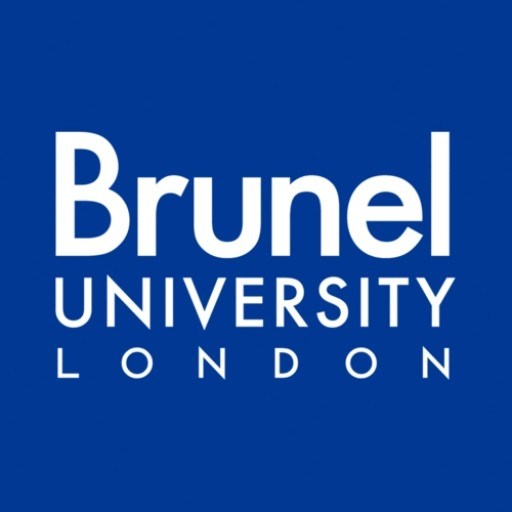Photos of university / #johnshopkinsu
The Bachelor of Science in Financial Mathematics at Johns Hopkins University offers a rigorous interdisciplinary curriculum designed to prepare students for success in the dynamic fields of finance, risk management, and quantitative analysis. This program combines advanced coursework in mathematics, statistics, computer science, and finance to equip students with the analytical and technical skills essential for tackling complex financial problems. Students will delve into topics such as stochastic calculus, financial modeling, numerical methods, and data analysis, gaining a deep understanding of how mathematical theories are applied to real-world financial issues.
Throughout the program, students are encouraged to develop strong programming skills in languages such as Python, R, and MATLAB, which are vital tools in quantitative finance. The curriculum also emphasizes the importance of understanding financial markets, instruments, and institutions, providing students with a comprehensive view of the financial industry. Internship opportunities and collaborations with industry partners are integrated into the program to provide practical experience and foster professional connections.
The faculty comprises renowned researchers and practitioners in the fields of mathematics, finance, and data science, ensuring that students receive a high-quality education grounded in current industry trends and academic advancements. The program prepares graduates for careers in quantitative analysis, investment banking, risk management, financial consulting, and other roles where analytical skills and quantitative reasoning are paramount.
Students will benefit from Johns Hopkins University’s strong emphasis on research and innovation, with access to state-of-the-art facilities and resources. The program encourages an interdisciplinary approach, nurturing critical thinking and problem-solving abilities that are essential in the fast-paced financial sector. Upon completion, students will be well-positioned to pursue advanced degrees or enter competitive job markets where their technical expertise and financial insight will set them apart.
Program Description: Financial Mathematics at Johns Hopkins University
The Financial Mathematics program at Johns Hopkins University offers a comprehensive curriculum designed to equip students with the advanced mathematical, statistical, and computational skills necessary to excel in the dynamic world of finance. This interdisciplinary program combines rigorous coursework in applied mathematics, probability theory, stochastic processes, statistics, and computer science with practical applications in financial modeling, risk management, and investment analysis. Students will explore core topics such as financial derivatives, quantitative trading, financial engineering, and portfolio optimization, gaining both theoretical understanding and hands-on experience through real-world projects and case studies.
The program emphasizes analytical thinking and problem-solving skills vital to addressing complex financial challenges faced by institutions worldwide. Through coursework, students learn to develop, analyze, and implement mathematical models used to evaluate financial instruments, assess market risks, and optimize investment strategies. The curriculum also includes training in programming languages like Python, R, and MATLAB, enabling students to build and test quantitative models with real data.
Designed to prepare students for careers in finance, banking, risk management, or further academic research, the program encourages interdisciplinary collaboration and critical analysis. Students benefit from Johns Hopkins' strong connections with the financial industry, gaining insights from industry experts and opportunities for internships. The program culminates in a capstone project where students synthesize their knowledge to solve complex financial problems, often in partnership with industry collaborators.
The program is suitable for students with a strong mathematical background who are eager to apply their skills in financial contexts. Graduates will be well-prepared for roles such as quantitative analysts, risk managers, financial engineers, or data scientists in leading financial institutions. With a reputation for academic excellence and innovation, Johns Hopkins University’s Financial Mathematics program aims to develop the next generation of financial professionals equipped to navigate and shape the future of global finance.
The Bachelor of Science in Financial Mathematics at Johns Hopkins University requires students to complete a comprehensive program of coursework designed to provide a strong foundation in both mathematics and finance. The curriculum integrates core principles of calculus, linear algebra, probability, and statistics with specialized courses in financial theory, derivatives, risk management, and quantitative analysis. Students are expected to engage in rigorous mathematical modeling, computational methods, and data analysis techniques applicable to financial markets and institutions. In addition to major-specific courses, students must fulfill the university's general education requirements, which include foundational areas such as writing, humanities, social sciences, and natural sciences, promoting a well-rounded academic experience. The program emphasizes experiential learning through projects, laboratory work, and potentially internships, preparing students for careers in banking, asset management, risk analysis, and financial consulting. Students are encouraged to develop skills in programming languages relevant to financial modeling, such as Python, R, and MATLAB, which are integrated into the coursework. The program typically takes four years to complete, with options for electives and minors to tailor the degree to individual career goals. To graduate, students must earn a minimum number of credits, maintain a specified GPA, and complete a senior capstone project that demonstrates their ability to apply mathematical and financial knowledge to real-world problems. Additionally, students are advised to participate in seminars, workshops, and networking events organized by the university's financial and mathematical departments to enhance their professional development. This program prepares graduates for advanced study or entry into the financial industry, ensuring they possess both theoretical understanding and practical skills to succeed in dynamic financial environments.
The Johns Hopkins University offers comprehensive financing options for students enrolled in their Financial Mathematics program, designed to make education accessible and affordable. Financial aid opportunities at Johns Hopkins include institutional scholarships, federal and state grants, loans, and work-study programs. Prospective students are encouraged to complete the Free Application for Federal Student Aid (FAFSA) to determine eligibility for need-based financial assistance. The university also provides merit-based scholarships awarded based on academic achievement, leadership, and potential contribution to the student community. These scholarships can significantly offset tuition costs and are awarded at admission or throughout the academic year, subject to renewal criteria.
In addition to scholarships, Johns Hopkins University offers departmental fellowships and assistantships for graduate students, which may include teaching or research responsibilities in exchange for funding and stipends. Students are advised to contact the program's financial aid office and their academic advisors to explore all available funding opportunities and application procedures. The university also participates in external fellowship programs and partnerships with financial institutions to support students pursuing studies in financial mathematics.
Loans provided through federal loan programs, such as the Direct Unsubsidized Loan and Graduate PLUS Loan, are available for eligible students to help cover education costs. These loans typically require a formal application process and demonstrate satisfactory academic progress. Work-study programs enable students to gain professional experience while earning income to contribute towards their educational expenses. Johns Hopkins encourages early planning and application for financial assistance, emphasizing the importance of understanding all funding options to effectively manage educational costs.
The university provides detailed guides and personalized assistance to help students navigate the financing process, ensuring they are aware of deadlines, eligibility requirements, and the benefits associated with each funding source. Overall, Johns Hopkins University is committed to supporting its students financially through a variety of resources and programs, fostering an environment where academic aspirations can be achieved regardless of financial background.
The Johns Hopkins University offers a specialized program in Financial Mathematics designed to prepare students for careers in quantitative finance, risk management, and related fields. This program combines rigorous training in mathematical modeling, statistical analysis, and computational techniques with practical applications in finance and economics. Students enrolled in the program gain skills in areas such as stochastic processes, numerical methods, derivatives pricing, and portfolio optimization, making them well-equipped to analyze complex financial instruments and markets.
The curriculum includes foundational courses in calculus, linear algebra, probability theory, and statistics, followed by advanced coursework in quantitative methods, financial theory, and computational finance. The program emphasizes the use of programming languages such as R, Python, and MATLAB to develop models and simulations, providing students with valuable technical competencies. Additionally, students have opportunities for research projects, internships, and collaborations with industry partners, which enhance their practical understanding of financial markets and instruments.
The program is uniquely tailored to meet the demands of the financial industry, blending theoretical knowledge with real-world applications. It aims to produce graduates who are proficient in developing quantitative solutions to finance problems, capable of working in investment banks, hedge funds, financial consultancies, and regulatory agencies. Johns Hopkins University’s location in Baltimore and proximity to major financial hubs further facilitate industry engagement and networking opportunities for students.
The faculty involved in the program includes leading researchers in financial mathematics, economics, and applied statistics, ensuring that students receive instruction rooted in the latest academic and industry developments. The program also benefits from Johns Hopkins’ extensive alumni networks, providing students with mentorship, career advising, and job placement support.
Admission to the program is competitive and typically requires a strong background in mathematics, statistics, or related fields. Prospective students are expected to demonstrate analytical skills, quantitative aptitude, and motivation to pursue advanced studies in financial mathematics. The university offers various resources, including workshops, seminars, and career services, to support student success throughout their academic journey and into their professional lives.
Overall, the Johns Hopkins University’s Financial Mathematics program offers a comprehensive, rigorous education that prepares students to become leaders in the rapidly evolving financial sector. Its blend of theoretical depth, practical application, and industry engagement makes it an excellent choice for students aiming to specialize in financial engineering, quantitative analysis, or risk management. Upon graduation, students are well-equipped to pursue careers across a broad spectrum of financial institutions and to contribute innovative solutions to complex financial challenges, leveraging the cutting-edge knowledge and skills acquired during their studies.









